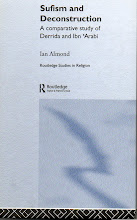 Globalizing Dissent: Essays on Arundhati Roy, eds. Ranjan Ghosh and Antonia Navarro-Tejero (London/New York: Routledge, 2009)214pp
Globalizing Dissent: Essays on Arundhati Roy, eds. Ranjan Ghosh and Antonia Navarro-Tejero (London/New York: Routledge, 2009)214ppQuite apart from any contribution to Arundhati Roy scholarship, Ghosh and Navarro-Tejero’s collection of essays on the Keralan writer – some wonderful, some useful, some awful – serves as an almost perfectly symptomatic illustration of some of the tensions now resident within the ever-expanding universe of postcolonial criticism. Roy’s own Janus-like vocation of writer and activist probably invites a compendium of disagreement of this sort anyway, and the authors have wisely decided to put the book of essays in two halves, one addressing Roy “the Artist”, the other dedicated to Roy “the activist, the intellectual”. Whatever criticisms one may level at the book, lacking in diversity it is not.
There are some strange essays within, not least of all the first (Jesse T. Airaudi), which lumps together Roy with Rushdie and the sociologist Ulrich Beck as writers who “speak for all humanity” (19), an assertion wrong on so many levels that it’s difficult to know where to begin. Rushdie was a vocal supporter of the US-bombing of Yugoslavia and, initially, George W. Bush’s war in Afghanistan. Airaudi’s conviction of both Rushdie and Roy as embodying a celebration of the “mongrelized and migratory” and a critique of “recurring oppression” (pp19,20), apart from hinging on a Protean notion of what kind of “real crisis” is “engulfing the planet” (missiles or mullahs? tanks or terrorists? states or suicide bombers? 4), appears unburdened by any idea of the actual relationship between Roy and Rushdie. When Roy insisted on a wider background of Indian responsibility behind the Mumbai attacks (Muslim poverty, Kashmir, Ayhodhya), Rushdie denounced her position as unintelligent.
This lack of radicalism inherent in Airaudi’s inadequate understanding of the word ‘political’ (which, I assume, he basically understands to mean a passionate belief in the right to blog) persists in another essay, this time by Emilienne Baneth-Nouailhetas, which ultimately laments the way Roy’s “militant writing” has displaced a fiction which is centered “on the individual and on a subjective, small-scale time, as opposed to the ‘bigness’ of history” (98). Roy’s comparison of Bush with Bin Laden and the IMF with al-Qaeda are “risqué”, we are told; writing from Rennes, France, Professor Baneth-Nouailtehas informs us Roy’s critiques of globalization and the World Bank are laced with “theoretical inconsistencies” (103).
A more intelligent – and much more politically serious – argument for the political validity of Roy’s novel is found in Pranav Jani’s essay, which offers (contra Ahmad et al) a progressive reading of The God of Small Things as “an antiauthoritarian, antipatriarchal novel, construing a narrative of subaltern struggle and survival” (48). To perform a maneuver in postmodern aesthetics, Jani argues, does not necessarily mean to “replicate the antihistoricist values of postmodern epistemology” (49). This belief in the ability of language and text to perform some kind of political change is probably one of the most central common denominators in the book, with Susan Comfort’s excellent essay arguing – in an article packed with depressing facts – that Roy’s crusade against dam construction and global capital is blessed by her postmodern gifts of “pastiche and playfulness” (119), postmodern qualities which enable her to see right into the heart of “ideological mystification” (it takes a mystifier, presumably, to catch a mystifier). There is an enlightening piece on Chomsky and Roy (Challakere), one which foregrounds the remarkable extent to which both figures have been systematically misrepresented in the mainstream media, a point one might wish was stressed by more of the essayists in this book. David Jefferess, although sympathetic to Roy’s political aims, spends a very careful twenty pages showing some of the more subtle limitations of Roy’s politics of dissent – in particular, how Roy uses “the figure of the Adivasi to construct a space for ‘cosmopolitans’ like herself to form bonds of solidarity with the oppressed” (166). Jefferess’ argumentation is sound, although the reader does begin to ask if Jefferess’ own expectations aren’t unreal – to argue that Roy’s solidarity with Adivasis elides those non-Adivasis who also suffer from dam projects is to believe in a perfect world in which radical political positions never have to sacrifice sophistication and all-inclusiveness.
Given the widescale uprisings of long-oppressed tribals and lower-castes which are taking place in India at the moment – and given Roy’s own sympathetic pronouncements on their plight – is it unfair to have wished for a couple more radical voices in this volume? Both Cara Cilano’s elegant deconstructive reading of the spectral in God of Small Things and Sara Upstone’s location of the novel’s subversiveness in its “spatial transgressions” (76) are fine pieces of criticism, and yet they seem to be indicative of most of the essays in the book in their interpretation of resistance as utterance, transgression, parody, re-description: in other words, the very obsession with textuality which the post-colonial is so widely derided for by its critics. As a number of the essayists point out, the trajectory of Roy’s own career – from novelist to activist – does suggest a frustration with a merely Rortyian re-description of reality, one which might explain why God of Small Things was the only novel she ever wrote.
Ranjan Ghosh ends the volume with a fluent and well-informed epilogue which sees in Roy a kind of Habermasian system-corrector, someone who “superbly alert[s] and activate[s]…the public space” (186). Ghosh’s praise is not without qualifications – “Roy needs to be more thoughtfully patient toward the specialization and identity of technocrats in the public sphere” (184). This reliance on the term ‘public sphere’, however, overlooks the extent to which ‘public’ now works for ‘private’ in India (and not just in India)…surely the point Arundhati Roy has been trying to make for the past ten years.




No comments:
Post a Comment